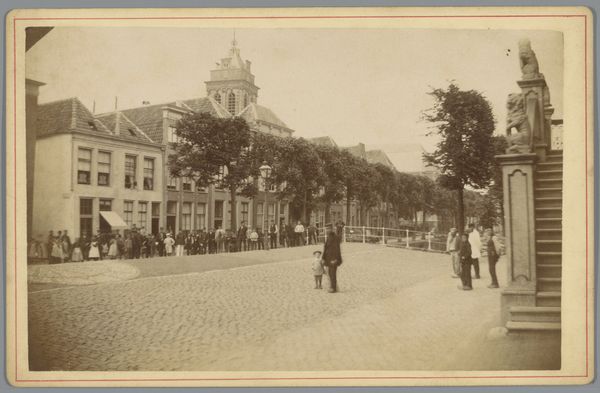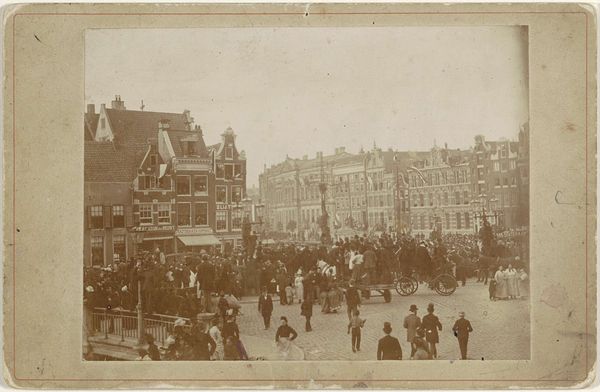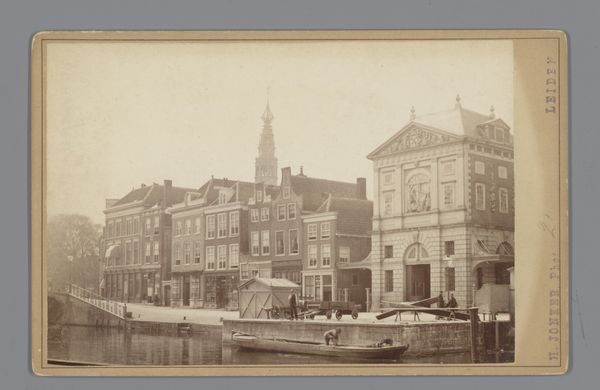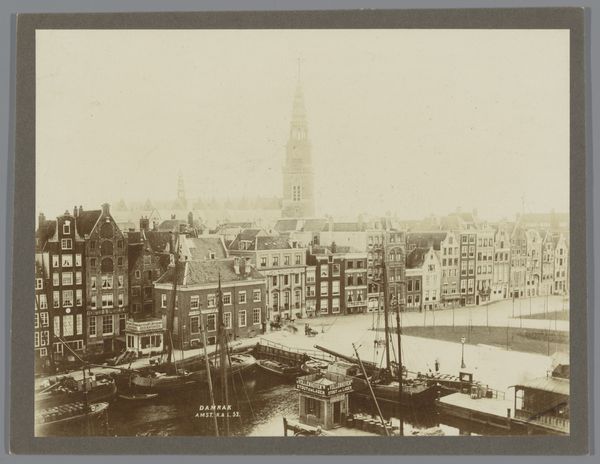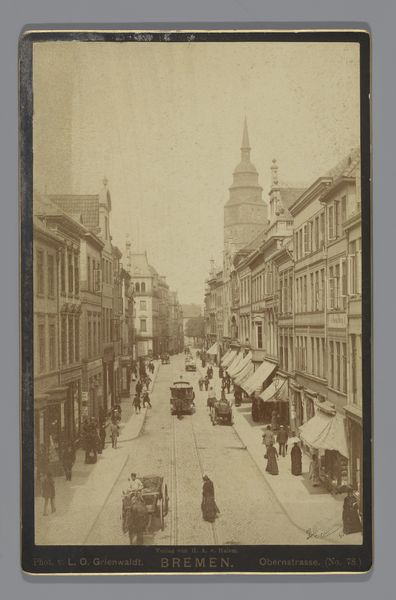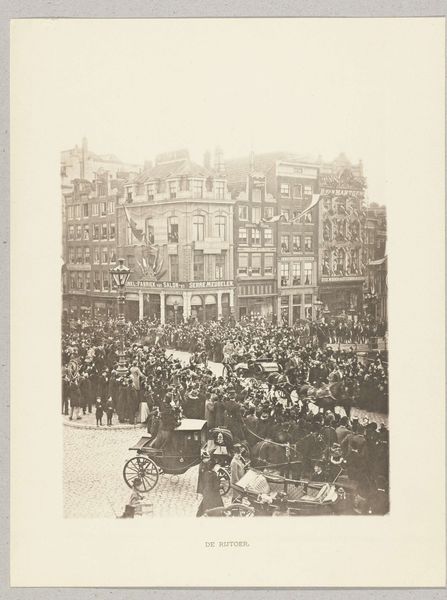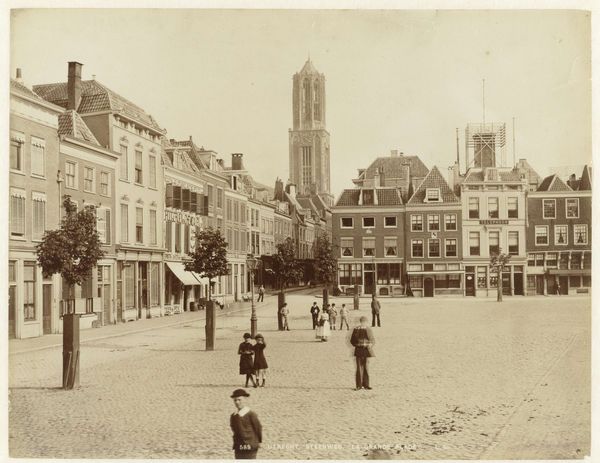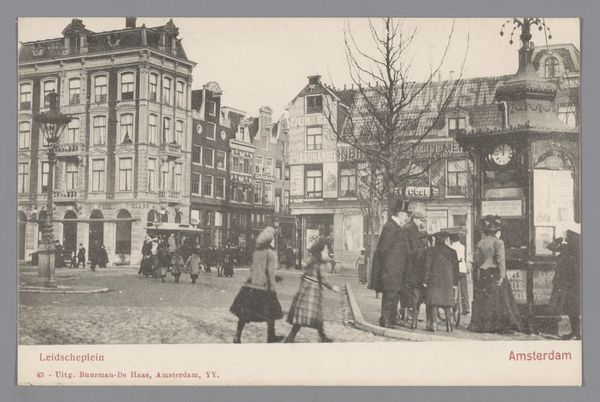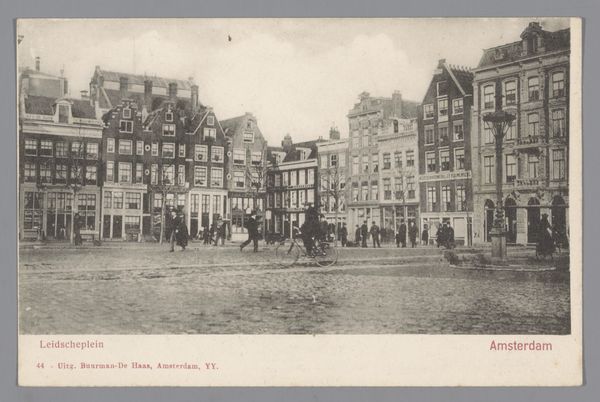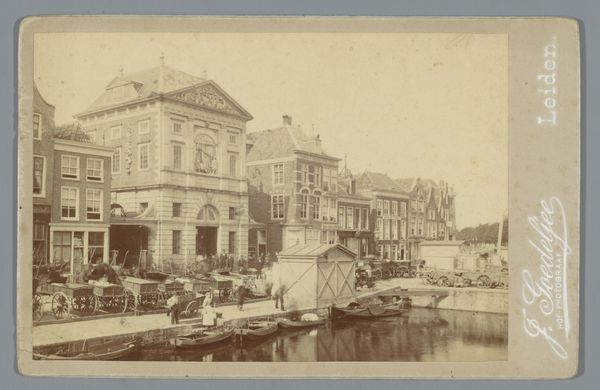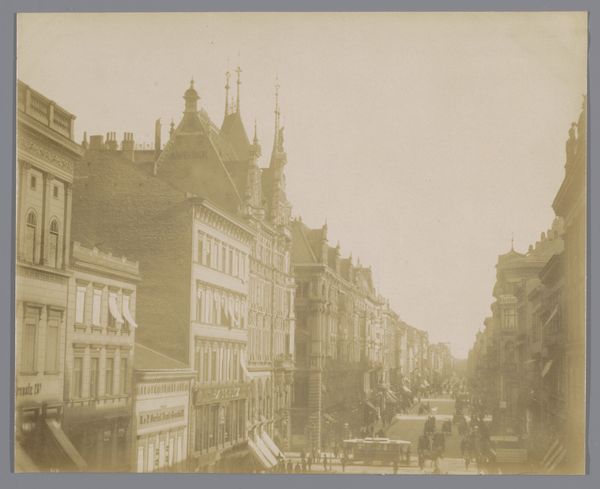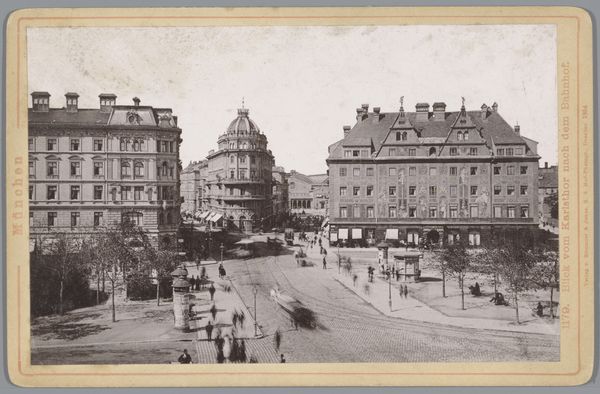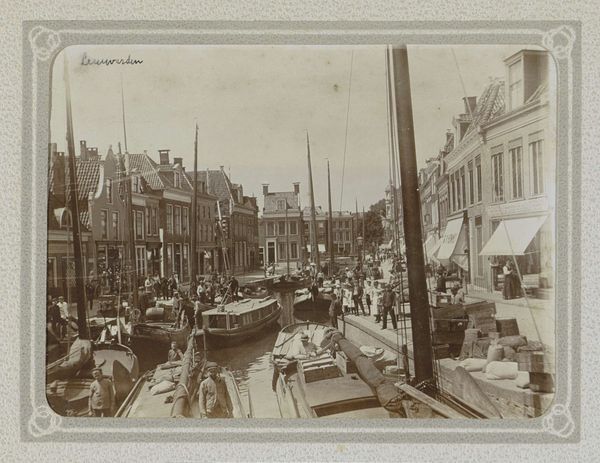
print, photography, gelatin-silver-print
#
pictorialism
# print
#
photography
#
gelatin-silver-print
#
19th century
#
cityscape
#
realism
Dimensions: height 108 mm, width 166 mm
Copyright: Rijks Museum: Open Domain
Curator: Berend Mulder's gelatin silver print, "Gezicht op de Grote Markt in Groningen," likely taken between 1880 and 1905, presents a bustling cityscape. What strikes you first about this piece? Editor: The density of the crowd and the stalls laid out; it’s really capturing the sense of a working, trading space. The muted tones of the gelatin silver process soften the scene, giving it an almost dreamlike quality. Curator: Indeed. The choice of the gelatin silver process is crucial. It democratized photography, making it more accessible to artists like Mulder. Think of the shift in visual culture— suddenly, scenes of daily life, like this market, could be widely documented and disseminated. Editor: Exactly, and we should think about what's *in* those stalls. What are they selling? Who are the people who made and transported those goods? This isn't just a pretty cityscape, but a snapshot of a complex, interwoven web of production and consumption. I would want to know more about the actual vendors that gathered there and the organization that the event entailed. Curator: Absolutely. We see the Grote Markt transformed into a stage for commerce. It is fascinating to think of the politics embedded in a market square. It's the place where the local meets the global; it reflects municipal regulations as well as cultural exchange. I imagine there were people from many regions represented here. Editor: I wonder about the light and dark too. How controlled or improvised the light must have been in order to illuminate these textures! I imagine also the physicality of that labor – the setting up and taking down and negotiating the light and elements would have added layers of narrative. Curator: Precisely! This is far more than just a neutral document. Mulder actively shapes our view of Groningen, deciding what to show and, perhaps more subtly, what to omit. The work invites us to consider how public spaces influence both trade and the circulation of photographic images. Editor: Right. For me, knowing that this was created with relatively new materials forces a connection to the daily realities that they depict; so, from the items at market to the photograph itself, both involve technologies of image-making as an aspect of daily experience and innovation. Curator: That's well put. It's an artwork that prompts us to consider the grand sweep of history in relationship with the labor of everyday. Editor: Agreed! An incredibly evocative piece.
Comments
No comments
Be the first to comment and join the conversation on the ultimate creative platform.

